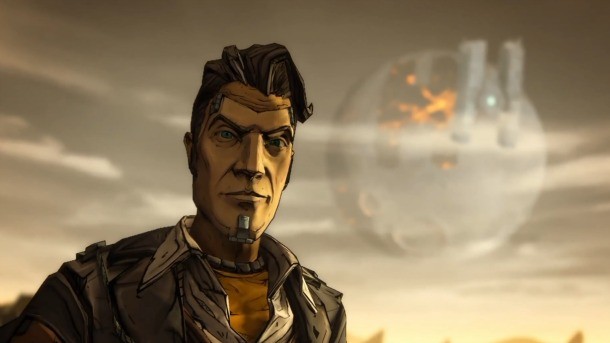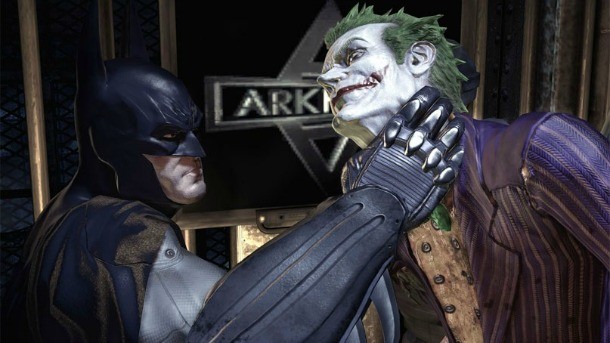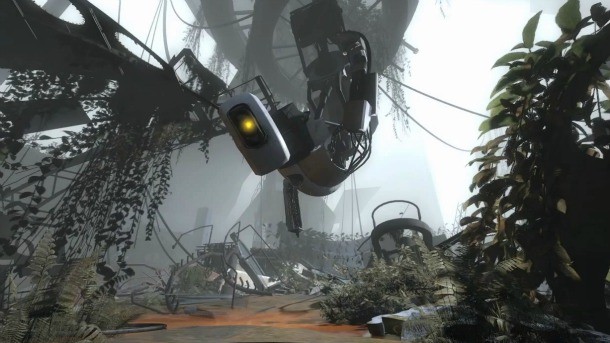Please support Game Informer. Print magazine subscriptions are less than $2 per issue
Crafting A Memorable Villain

If there is one thing the original Borderlands desperately needed, it was a villain. A slew of characters came and went through the story, but there was never any singular presence players could set their sights on. That all changed in the sequel, though.
The dynamic between the heroic do-gooder and the nemesis develops a clear focus on the story direction, with all of the details littered throughout. Video game villains serve a unique purpose, though. Instead of merely viewing the conflict, video games involve you in it. This calls for a bad guy who can drive you forward, dangling a carrot in front of you. Handsome Jack stands as one of the most recent enemies to accomplish this feat.
Right off the bat, Handsome Jack gives players a reason to tear through robots and slay bandits across the wastes of Pandora. His sadistic tendencies, sarcastic demeanor, and narcissism create a personality that the Vault Hunters can’t wait to silence. And yet, some aspects of the villain are likeable. Sure, he hides behind an army of mechanized killing machines. And yes, he murders innocent civilians for entertainment, but Gearbox’s character is well written, and he does a great job of propelling you from quest to quest.
What begins as a bid to take over Pandora becomes a personal dispute between you and Jack. In the end, he doesn’t just want to kill you; he wants to dismantle every fiber of your being. He’s a power-hungry tyrant turned schoolboy because of your insistence on ruining his plans. He’s an evil individual at the heart of it all, but the personal touch that Jack adds to Borderlands 2 is remarkable. In the waning hours of the game, the story climax centers directly on you and him, and the result is a satisfying end to a well-developed conflict.
Certain characteristics are prevalent among video game villains, but several games show those off better than others. Look back at titles with excellent writing, and there’s a good chance you’re also going to find some of the medium’s more memorable villains.
Up Next: The Man Who Laughs

A Never-Ending Game
A multitude of comic books and graphic novels have placed the Joker front and center in their plots. He’s dangerous, he’s clever, and he’s completely unpredictable. Several origin stories in The Killing Joke, The Man Who Laughs, and Detective Comics #168 attempted to make sense out of the Dark Knight’s nemesis and counterpart. What intrigues readers and gamers the most though, is not where he came from, but what he’ll do next.
The Joker’s capricious nature is difficult to grasp, but his insanity supplies the backbone for the plot in Arkham Asylum. The opening scenes place Batman right at the side of the criminal as he is wheeled into the iconic mental hospital. This proximity creates tension from the get go, leading right up to the point where the Joker breaks free from his bonds and initiates his takeover of the entire asylum. Crazy master plans aside, the Joker’s movements and speech alone showcase his psychotic nature. Skipping around the asylum, laughing as he toys with you, and conversing openly with himself gives you glimpses of his random inner thoughts. This erratic behavior leaves you guessing as the plot unfolds.
Batman’s writers have often touched on the idea of the Caped Crusader and the Joker being locked in an endless battle, one that could only be ended with one of their deaths. But since Batman’s moral code prevents him from killing, and the Joker wouldn’t have fun without the Batman there to oppose his crimes, the dynamic is ongoing in many plotlines.
This yin and yang mechanic that plays out between the two is apparent in Arkham Asylum. As the Joker rolls out plan after plan in his attempt to take over the asylum, the Batman is there to thwart his every move. It’s a compelling objective at every turn: stop the Joker. His maniacal laughter and carefree attitude serve only to frustrate you more and more each time he reveals another twist in his demented plan. The Joker is one of the greatest villains conjured from the comic book realm, and Rocksteady succeeded in implementing his psyche in a useful way.
Up Next: I’m Still Alive

The Personal Touch
It’s impressive when you can grow to love a villain. With streamlined level design and pitch-perfect writing, Valve created one of the more iconic characters of this generation. GlaDOS is a supercomputer that resorts to petty remarks about the protagonist’s weight, yet you can’t help but burst out laughing at her well-timed insults.
The first Portal places you in a series of test chambers where she has complete power over the proceedings, and you’re merely a mouse in her experiments. Little by little, you begin to stray from the rules she has created. The apex of satisfaction finally comes when you break out of the chambers to wreak havoc on the infrastructure she has created.
Although she’s a machine in complete control, GlaDOS’ human characteristics bring her down to your level. She becomes frustrated, which leads to insults, which lead to hilarity, making every small rebellion against her satisfying in an in-your-face kind of way. Portal becomes less about solving puzzles and more about taking down the dictator forcing you through the tests. She’s a perfect example of how an omnipresent character can propel you effortlessly through a story.
The casts of the Portal games aren’t stocked with many characters. What’s admirable about GlaDOS is that she makes you forget that; her dialogue and traits are all that are needed to increase your thirst for escape. In every sense of the word, she is a villain.
Up Next: Vicarious Villainy

Childhood Trauma
Heavy Rain is known for blurring the line between film and video games, but also for creating its own genre in the process: interactive film. A good deal of the game is spent watching, but just as much of it tells a story through player interaction. What makes the Origami Killer such a compelling villain, and even piteous, is how the interactive narrative cuts out any separation between you and him.
Many notable villains have depressing origin stories. Childhood trauma has become a trope when delving into the motivations of evil characters across the media. Heavy Rain takes this concept and allows you to experience it through the eyes and actions of the one affected.
The majority of Heavy Rain chronicles the Origami Killer murders, as seen through the eyes of four playable characters. Each new crime strings you along as you attempt to uncover the culprit, desperate for any leads that could bring the sadistic felon to justice. Motive is always important in an investigation, and developer Quantic Dream decides to show rather than tell.
A flashback sequence places you in the role of the killer as a young boy playing hide and seek with his brother, who falls into an open drainpipe full of rushing water. Being a frail young man, you don’t have the ability to pull him out yourself. The following rush to alert the boys’ step-father creates a sense of urgency that couldn’t be conveyed as well if you weren’t in the shoes of the character. This sequence not only explains the cruel motives behind the killer’s crimes, but it creates some sense of morbid understanding between you and the killer. It’s something that couldn’t be done outside of video games, cementing the Origami Killer as a unique villain.
Up Next: A Shocking Boss Battle

Remorse
The boss fight with Psycho Mantis in Metal Gear Solid leaves a mark on anyone who has experienced it firsthand. Not only does he break the fourth wall by vibrating your controller and reading your past memory card data, but he can read your every move, too. Moving your controller from the first player to the second player slot solves this problem, and you’re free to attack him as you please.
You can take the bodily harm he is inflicting on you, but when he invades your love interest Meryl’s mind and turns her own gun against her head, panic sets in. Finally, after subduing Meryl and delivering the finishing blow to Psycho Mantis, he falls.
The hardest part of the boss fight begins now. With his mask removed, you gaze upon the mangled face of a human cursed his entire life. He lays bare his every regret, exposing his hate towards a humanity that exists to fight itself. In his dying breath, Mantis helps you, revealing the path to your goal.
This sudden turn of events is especially traumatic because of the fact that you pulled the trigger on someone who returned the favor by helping you. Sure, he was a pain before you destroyed him, but the regret he expresses now forces you to rethink your actions. It’s one of the least satisfying boss fights designed in video games, but that doesn’t make it the least effective.










